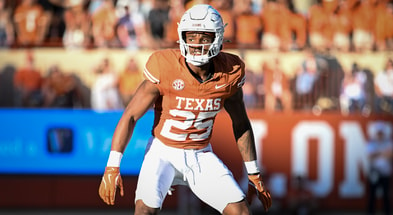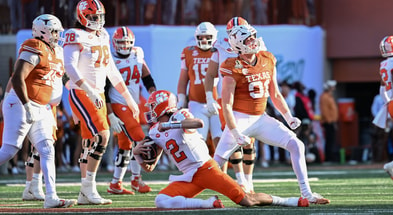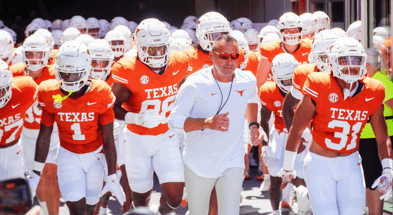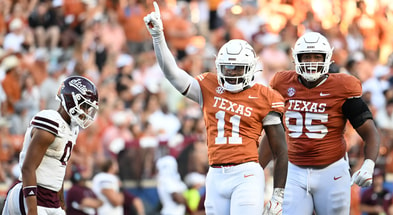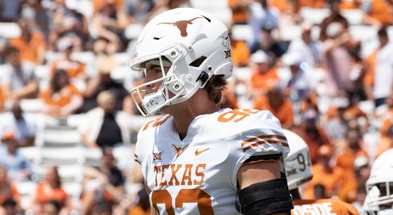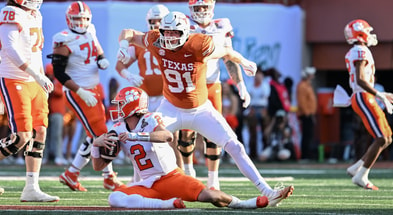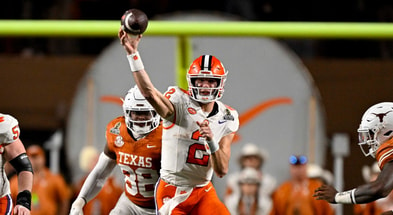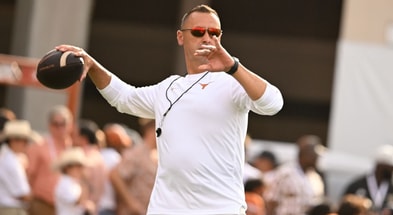The Tax Implications of NIL By State
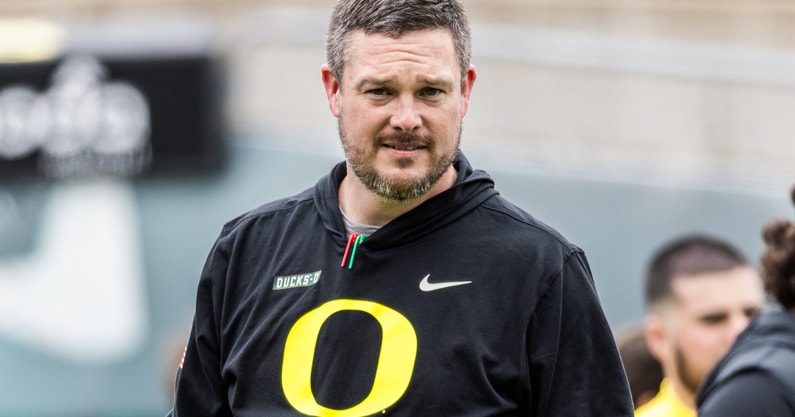
How much a player earns in NIL is paramount, but WHERE they receive that payment has massive financial implications.
[Sign up for Inside Texas TODAY and get the BEST Longhorns scoop!]
As a former resident of California, let me assure you of this.
We’ll evaluate two yearly NIL comps, $150,000 and $1,000,000, and place that player in Austin, Los Angeles, Eugene, Columbus and Athens and see if there are any meaningful tax implications.
$150,000
| Texas | USC | Georgia | Ohio State | Oregon | |
| Effective State Tax Rate | 0% | 6.64% | 4.96% | 2.48% | 8.0% |
| Local Tax Rate | 0% | 0% | 0% | 2.50% | 0.79% |
| Total With Federal | 24.68% | 31.32% | 29.63% | 29.65% | 33.46% |
| Dollar Differential | 0 | 9963 | 7438 | 7467 | 13,183 |
| Sales Tax | 8.25% | 9.75% | 8.0% | 8.0% | 0% |
| Ranking | 1 | 4 | 2 | 3 | 5 |
I bet a lot of you didn’t know that the state of Oregon taxes like North Korea and that those tax rates peak in the tables even earlier than in Trotskyite California.
Oregon pushes their lack of a state sales tax to recruits while hiding the ball on income taxes, but the idea that zero sales tax is a wash vs. a very high state income tax is counting on basic innumeracy.
A high state income tax is 3X to 10X more disadvantaged than the benefits provided by zero sales tax, depending on income and expenses.
The state income tax is with you always and starts at the EARNED DOLLAR, not the SPENT DOLLAR and a $50,000 vehicle is a one time purchase. Your income is a sheep that may always be fleeced.
Any notion of a sales tax offset is particularly spurious for a college football player that has no real expenses beyond their discretionary purchases.
Don’t ignore the sneaky local tax rate in Columbus, OH. It takes some of the shine off of a low state income tax rate.
If a 150K per year player, living the same consumption life, took the $13,183 differential that he pisses away to Oregon taxes and chose Texas or Florida and invested that amount every year for four years, he’d have 1.5 million dollars sitting in an account at age 62 assuming no other contribution made his entire life.
That’s not inconsequential or a rounding error.
Let’s look at a more highly compensated NIL player:
$1,000,000
| Texas | USC | Ohio State | Georgia | Oregon | |
| Effective State Tax Rate | 0% | 10.37% | 3.35% | 5.33% | 9.61% |
| Local State Tax Rate | 0% | 0% | 2.50% | 0% | 0.79% |
| Total with Federal | 35.49% | 45.86% | 41.34% | 40.82% | 45.90% |
| Dollar Differential | 0 | $103,695 | $58,467 | $53,253 | $104,148 |
| Sales Tax | 8.25% | 9.75% | 8.0% | 8.0% | 0% |
| Ranking | 1 | 4 | 3 | 2 | 5 |
As incomes rise, the differences are more stark as you climb the progressive tax tables.
Effectively, you’re throwing away over 100K a year to play at USC or Oregon vs Texas at this comp level.
Top 10
- 1Breaking
Landmark Approval
House vs. NCAA Settlement
- 2New
EA Sports CFB 26
Schools paid based on usage
- 3
Manning Passing Academy
College QB attendees announced
- 4
Keelon Russell
Mother releases statement
- 5Trending
MLB Mock Draft
New No. 1, big shakeup
Get the On3 Top 10 to your inbox every morning
By clicking "Subscribe to Newsletter", I agree to On3's Privacy Notice, Terms, and use of my personal information described therein.
Take the income tax differential between playing at Texas vs. USC, invest it every year for four years at a 9.5% return, and you’ll have 3.8 million dollars in the bank at age 62 having never put another dime into savings.
If you’re a truly high income NIL athlete, making in excess of 1.4 million dollars per year, California taxes every single dollar over that sum at 13.3% with an additional 1.1% on your payroll tax if you incorporate (and you should).
You’re getting hit with 14.4% state tax rates and giving away half of your money after the Feds take their cut.
Have fun with that.
For the highly compensated athlete, even modest state/local income tax states like Ohio and Georgia mean giving up 50K a season (at 1 million earnings) you’d otherwise save or enjoy.
How about $232,000 towards your (or Mom’s) new house over four years if you chose to play in Gainesville or Austin rather than Columbus?
Needless to say, schools in Texas and Florida are massively advantaged.
My question is whether those schools are adequately emphasizing the difference?
The “same offer” from USC, Oregon or Texas for a coveted five star or portal transfer is actually Oregon and USC trying to acquire that player at a steep discount.
Ultimately, athletes should choose the best overall fit, but at minimum, these considerations are a hell of a tie breaker.



